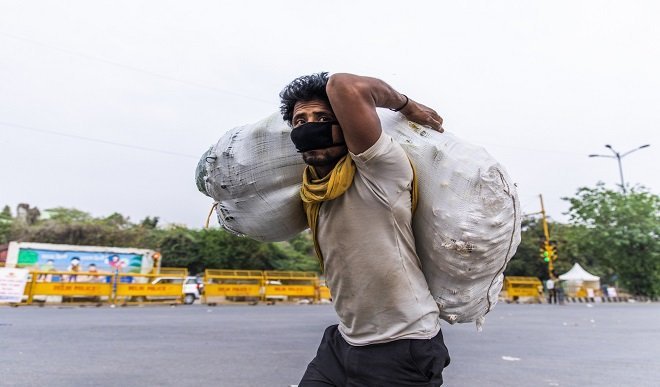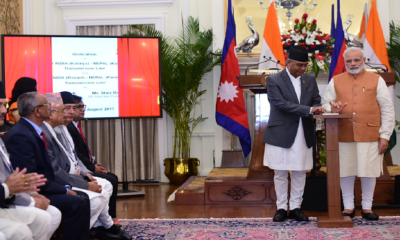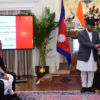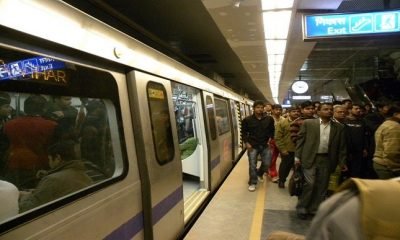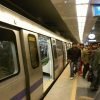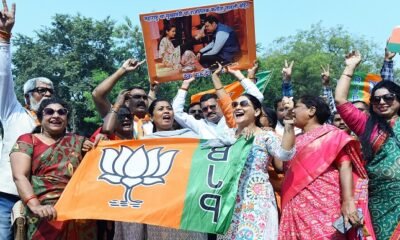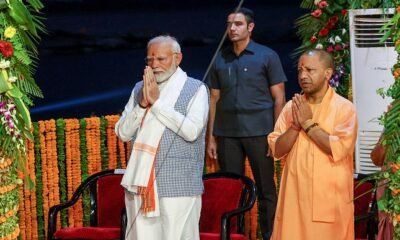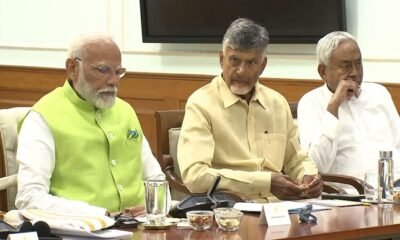National
Why does the migrant labourers problem persist?
Abhishek Ranjan.
On 24th March, Prime Minister Narendra Modi announced the first phase of lockdown. Severe restrictions on movement and transport were imposed to arrest the spread of the COVID-19 virus. Due to the suspension of nearly all economic activities like services and factories, workers were now left unemployed in the cities with rent to pay and no wages. The 2011 census found that 455 million Indians, or over one-third of the population could be classified as “migrants”- people who are found at a different place than their “usual place of residence”. But only 45 million of those were ‘Economic Migrants’. The latest figure can be found in the 2016-17 Economic Survey which estimated the total migrant workforce at over 100 million in 2016. Despite all the data available, the huge number of desperate inter-state migrants walking on roads, highways, and train tracks caught the Centre and state governments unawares. However, the plight of migrants has been a running theme throughout the preceding decades. This begs the question – why so? The following article provides legal, policy and statistical perspectives to the issue.
What has not been taken into account are the estimates of circular or seasonal migrants, who might go to a city to work for a period of time and then return home or go to a new place.The precise scale of such circular or short-term migration has not been well measured. But studies show that short-term migrants have remained the most vulnerable. They are considerably worse off than long-term migrants, as they move to the cities not so much to make a better life for themselves than to survive. Hence, in a “seasonal” manner they go back and forth from these urban areas depending on work available; forecasting their low resilience to stay in cities without employment.
Nasir – More to Observe than to Watch
This brings us to another contributing factor to this massive gap in information available on inter-state migrant workers – The Interstate Migrant Workmen Act, 1979 (hereinafter referred to as the ISMW Act or the Act) which regulates the employment of Inter State migrant workers and to their conditions of service. The immediate aftermath of the lockdown has clearly exposed the inefficacy of the Act in tackling the plight of migrant workers. This is mainly because of two reasons: first, the very definition of a “migrant worker” under this act limits it to those recruited by or through a contractor in one State under an agreement or other arrangement for employment in an establishment in another State. The act, thereby excludes workers like the short term or seasonal migrant workers who migrate to cities without any such recruitment. Second, the compliance costs levied on the contractors are quite high. Since the Act was legislated to prevent the exploitation of the workers – it provides for several social security entitlements like suitable accommodation, free medical facilities and protective clothing along with fair wages, displacement allowances etc. These entitlements for the workmen translate into obligations for the contractor. The onerous requirements set out in this law incentivise contractors and employers to under-report inter-state workmen rather than to register them.
Hence, these past few months under lockdown have highlighted a grave need to re-assess and reformulate the legal framework for migrant labour. The social welfare legislations need to shift focus from just their objectives and become more outcome driven instead. This requires for the state capacity to be taken into greater consideration to ensure effective implementation. The first step in this direction could be the expansion of the definition of “migrant worker” under the ISMW Act. After which a full top-down reformation is needed to demystify the law. It is necessary for social welfare legislation to be easily read by the main stakeholders, i.e, in this case, the workmen and the contractor – in a way that it disincentives exploitation by the employing agencies.
But right now the immediate need is to develop a workable data base for migrant labour. The government has announced Rs. 40,000 Cr worth of funds to be disbursed into the MGNREGA scheme in order to imbibe the labour migrating back to their villages. Hence, a database can be developed by comparing MGNREGA admission rolls of last year and of the past few months, considering the new admissions to be the migrant workforce coming from urban areas. This can help us prepare for the reverse migration back to the urban areas in the near future when economic activities start opening up again.
The implementation of the ISMW Act in letter and in spirit would’ve meant extension of stable employment and social security nets to the workers. But so far labour laws have only contributed in dividing the workforce of the nation into formal and informal sectors. The economic survey of 2018-2019 stated that a staggering 93 percent workers are in the informal economy which leaves the majority of workers without the required social security net. Access to these nets may have prevented or provided a chance at relief to the migrant workforce from the challenges posed by the ongoing lockdown. So far, state governments have used the database provided by the MGNREGA scheme to facilitate cash transfers to farmers and labourers in rural areas. But there are hardly any schemes for informal workers in urban areas. Therefore it becomes expedient to formulate a policy framework to cater to this lacuna as a long term solution.
Coding, the new Norm In Early Education- an Analysis
The model of MGNREGA scheme works to generate employment which is useful for the betterment of agriculture, centred around the principle of “the poor helping the poor”. A similar urban employment scheme needs to be implemented to organise the informal workforce in urban areas. The way gram panchayat helps facilitate NREGA, a similar mode of decentralised model of self-governance model needs to be imitated at the municipality level. A structure like a community network provided by the Kudumbashree model in Kerala – based on the agenda of poverty eradication and women empowerment – could be instrumental to help organise and coordinate with the informal workforce in urban areas. The first stepping stone in the formulation of such a policy framework could be the interlinking of data-base of PDS beneficiaries and Jan Dhan-Aadhar-Mobile (JAM) trinity. This framework could further be developed on the migrant friendly principle of “One Nation, One Ration” to create an integrated, comprehensive system, which PM Modi announced recently.
Migrant workers form the backbone of our economy and our cities, but despite that they have faced severe neglect in our policy and at all levels of governance. One of the major casualties of the pandemic has been the faith of the migrants in the Centre and State governments. The inefficient coordination between the states and Centre, and the lack of involvement of the Labour Ministry before the first lockdown has caused severe hardships and uncertainties for a significant part of our population. Although this has seen some correction over the subsequent phases of lockdown, the migrant workforce must not slip back from its position of priority. As mentioned above, a concerted effort towards overhaul of legal, technological and policy framework is imperative, during the pandemic and beyond.
(Abhishek Ranjan is a Public Policy Professional based out of Delhi, and founding member of FRIENDS OF BIHAR initiative which helped almost 80,000 stranded labourers across India)


